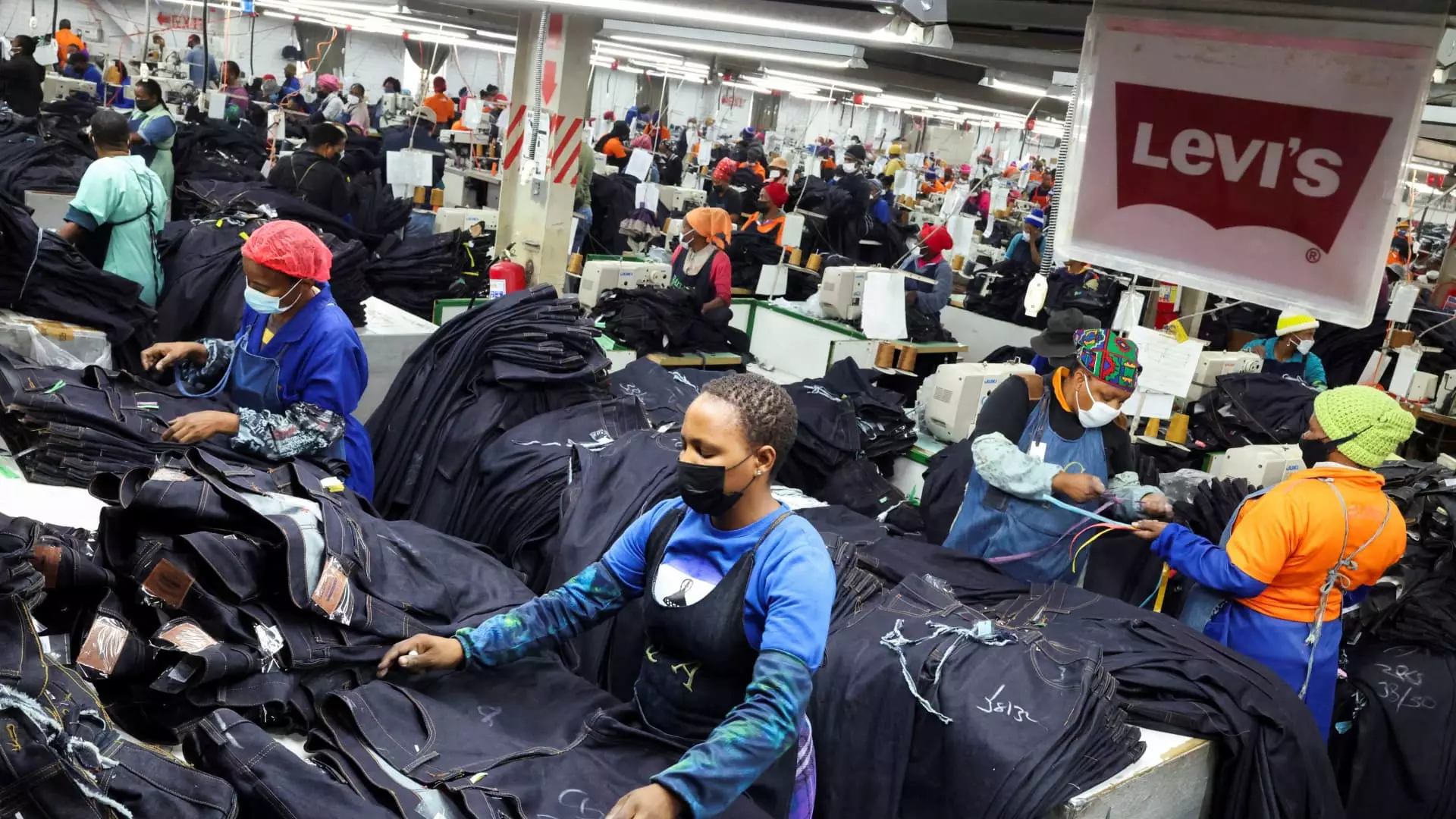Levi Strauss’s recent upward revision of its full-year guidance signals a surprisingly optimistic outlook in an environment rife with economic uncertainty. Yet, beneath this veneer of confidence lies a stark reality—an intricate web of trade policies that threaten to undermine stability and profitability. While the denim giant projects a modest but encouraging growth trajectory, it does so under the shadow of President Trump’s shifting tariffs and trade negotiations that could quickly alter the landscape.
Despite publicly absorbing some tariff costs, Levi’s is effectively playing a game of economic roulette, balancing on the edge of policy shifts. Its reliance on Southeast Asian manufacturing—especially countries like Pakistan, Bangladesh, and Indonesia—puts it squarely in the crosshairs of tariffs threatened by the current U.S. administration. The company’s strategic ambiguity regarding its manufacturing hubs reflects both a pragmatic approach and an unsettling dependency that leaves it vulnerable to sudden policy changes.
The forecasted increase in earnings—projected at $1.25 to $1.30 per share—suggests resilience. Still, analysts’ expectations and the company’s optimism could be short-lived if tariffs escalate beyond current projections. A mere 30% tariff on China and 10% on the rest of the world form the basis of Levi’s optimistic outlook, but these figures might be rendered obsolete overnight as trade talks evolve. With the possibility of tariffs soaring over 30% on key importing nations, Levi’s is exposed to risks that could drastically undermine its margins.
Strategic Responses to Existential Threats
What stands out is Levi’s proactive attempts to shield itself from these looming threats. Its CEO Michelle Gass emphasizes the importance of brand strength, innovation, and premium pricing as shields against the headwinds. The company’s strategy to cut back on promotions and push full-priced items demonstrates a desire to maintain profitability amid turbulent conditions. This approach is pragmatic, but it also masks an underlying vulnerability—reliance on consumer loyalty in a climate where tariffs could erode disposable income and shift purchasing behaviors.
Levi’s recent financial performance provides a sliver of hope. Its second quarter earnings exceeded expectations, with an 8% rise in shares following results that beat analyst estimates on both revenue and earnings. However, this short-term success may cloud a more precarious future if tariffs or trade tensions escalate further. The company’s sales growth, fueled largely by direct-to-consumer channels and new product innovation, might be a temporary buffer rather than a sustainable long-term solution.
The company’s decision to sell off its Dockers brand indicates a strategic realignment. Divesting from underperforming segments reflects an acknowledgment that Levi’s must streamline operations and focus on core strengths—particularly its iconic denim and burgeoning women’s apparel lines. The success in these areas—up 14% and 16%, respectively—demonstrates that Levi’s can thrive when it adapts to evolving consumer tastes. Still, these gains could be fragile if tariffs hit harder than anticipated, increasing costs and forcing shifts in pricing or product sourcing.
The Cultural Edge and Consumer Loyalty
Levi’s efforts to remain culturally relevant in a competitive apparel landscape exemplify its understanding of brand power. Collaborations like the Beyonce partnership highlight how the brand aims to stay top of mind amidst changing consumer preferences. Tapping into pop culture not only elevates Levi’s image but also broadens its appeal beyond traditional denim customers—particularly women, where the company has seen promising growth.
This cultural strategy underscores a vital point: in an era of global economic volatility, authenticity and relevance can serve as potent anchors for consumer loyalty. Levi’s positioning itself as a youthful, innovative brand that isn’t afraid to align with popular culture is a sound move. Yet, it also risks superficiality if the core business—marked traditionally by conservative pricing and reliance on North American markets—cannot withstand the pressures of rising tariffs and supply chain disruptions.
The company’s focus on e-commerce and direct sales channels signifies a crucial recognition that consumers increasingly prefer brands that communicate and sell directly. This shift not only improves margins but also provides invaluable consumer insights. Nevertheless, this strategy’s success hinges on Levi’s ability to navigate the costs implied by tariff increases and reduced supply chain flexibility.
The Fragile Ecosystem of Growth and Uncertainty
Levi’s position as a symbol of American heritage, combined with its global aspirations, encapsulates a complex dance with the unpredictable policy environment. While its recent financial results signal strength, these are fragile and highly contingent on external factors. The company’s gross margin record of 62.6% illustrates operational efficiency and effective inventory management, but sustaining such margins could become increasingly difficult if tariffs drive up material costs or force price hikes that diminish demand.
Moreover, Levi’s efforts to broaden its product range and captivate new demographics—especially women—are strategic investments in future growth. Yet, these initiatives are again susceptible to external shocks. If trade tensions escalate, the cost of imported raw materials and finished goods will likely rise, constraining profit margins and forcing difficult strategic decisions.
Levi’s resilience is undeniable, but it is also perilously anchored in a geopolitical environment where nothing can be taken for granted. Its investments in innovation and brand-building are promising, yet these measures might prove insufficient in the face of a volatile trade policy spectrum. Levi’s future success will depend heavily on its ability to adapt swiftly, resist complacency, and maintain consumer trust amid increasingly turbulent international economic waters.

